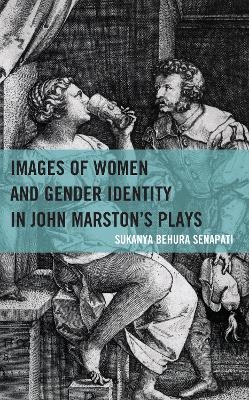
Images of Women and Gender Identity in John Marston's Plays
Seiten
2023
Lexington Books/Fortress Academic (Verlag)
978-1-6669-1027-8 (ISBN)
Lexington Books/Fortress Academic (Verlag)
978-1-6669-1027-8 (ISBN)
Arguing that patriarchy and ownership of private property are intimately meshed together, Senapati avers that Marston interrogates the misogyny of the Jacobean period by delimiting two predominant myths that have crippled women through the centuries—the beauty myth and the myth of the weak and sexual female—both constructs of patriarchy.
Images of Women and Gender Identity in John Marston's Plays contends that, although the Jacobean period was known for its misogyny and John Marston for his quarrels with his fellow poets, Marston’s plays deserve reevaluation and critical interrogation through a feminist lens. Arguing that patriarchy and ownership of private property are intimately meshed together, Senapati posits that Marston interrogates the misogyny of the Jacobean period by delimiting two predominant myths that have crippled women through the centuries—the beauty myth and the myth of the weak and sexual female—both constructs of patriarchy. Through the tracing of the history of five prototype images of women in literature—wench, wife, widow, sex worker, and witch—from antiquity to the early modern period, Sukanya Behura Senapati demonstrates Marston's explosions of binary gender categorizations to open space for experimental constructions of fluid and flexible gender identities.
Images of Women and Gender Identity in John Marston's Plays contends that, although the Jacobean period was known for its misogyny and John Marston for his quarrels with his fellow poets, Marston’s plays deserve reevaluation and critical interrogation through a feminist lens. Arguing that patriarchy and ownership of private property are intimately meshed together, Senapati posits that Marston interrogates the misogyny of the Jacobean period by delimiting two predominant myths that have crippled women through the centuries—the beauty myth and the myth of the weak and sexual female—both constructs of patriarchy. Through the tracing of the history of five prototype images of women in literature—wench, wife, widow, sex worker, and witch—from antiquity to the early modern period, Sukanya Behura Senapati demonstrates Marston's explosions of binary gender categorizations to open space for experimental constructions of fluid and flexible gender identities.
Sukanya Behura Senapati is professor of English at the University of South Florida.
Notes and Abbreviations Used for Texts
Introduction
Chapter 1: Wenches
Chapter 2: Wives
Chapter 3: Widows
Chapter 4: Sex Workers
Chapter 5: Witches
Conclusion
Bibliography
| Erscheinungsdatum | 11.10.2023 |
|---|---|
| Sprache | englisch |
| Maße | 158 x 238 mm |
| Gewicht | 472 g |
| Themenwelt | Geisteswissenschaften ► Sprach- / Literaturwissenschaft ► Anglistik / Amerikanistik |
| Geisteswissenschaften ► Sprach- / Literaturwissenschaft ► Literaturwissenschaft | |
| Sozialwissenschaften ► Soziologie ► Gender Studies | |
| ISBN-10 | 1-6669-1027-9 / 1666910279 |
| ISBN-13 | 978-1-6669-1027-8 / 9781666910278 |
| Zustand | Neuware |
| Haben Sie eine Frage zum Produkt? |
Mehr entdecken
aus dem Bereich
aus dem Bereich
Poetik eines sozialen Urteils
Buch | Hardcover (2023)
De Gruyter (Verlag)
CHF 83,90
Buch | Softcover (2024)
belleville (Verlag)
CHF 27,95


